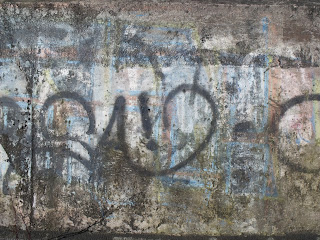"The traditional linear storytelling of St Peter’s has been deliberately disrupted by engaging multiple voices, such as those from experts in a range of fields (Cultural Geography, History, Landscape Architecture, and so on) who gathered at the Venice Architecture Biennale in 2010 to discuss their thoughts on the building and ideas for its use. The purpose of this “deliberately discursive approach” (van Noord, 2011, p.8) was to “convey a sense of open-endedness, of potential, and of there not necessarily being a single clear trajectory ahead, but rather a multitude of small, incremental decisions” (van Noord, 2011, p.8). Such an approach demonstrates a leaning towards the rhizomatic thinking that Deleuze and Guattari advocate. Where a linear, chronological, point-to-point story is emblematic of a tree as it stretches up straight and hierarchically with a beginning point and an end point; a rhizome has no beginning or end, it is comprised of random connections and disruptions; it is all middle, like the
horizontal sprouting of roots and tubers: “The tree imposes the verb “to be”, but the fabric of the rhizome is the conjunction, “and … and … and”” (Deleuze and Guattari, 2004, p.27). Rhizomatic stories are therefore non-predictive and
have no beginning or end, only middle, only now; and this is recognised with the observation: “It is pointless to dictate what the buildings of the future will look like, or how they will work – we aren’t prophets – but we can …steer their evolution in the here and now” (Hollis, 2011, p.56).

St Peter's Seminary, Ether - 2012 - Oil on canvas over panel
To engage rhizomatically with St Peter’s is to issue forth along the lines of becoming that constitute its assemblage. To break the desire to control the end-point of one’s actions, one must improvise and engage playfully with the lines of flight that cross one’s path. Ross M Brown is an artist who has adopted what could be seen as a rhizomatic approach to the composition of his paintings of St Peter’s (Figure 6). Beginning with a rigidly controlled perspectival drawing, not unlike those of the architect, Brown builds up the painting by pouring, smearing and dripping paint onto the canvas. This process is demonstrative of the contrasting ways in which the building can be perceived. From one perspective, the perspectival drawing is an exercise in point plotting, privileging the form of the building by reducing its material fluctuations to a series of straight lines. The splattered and poured paint, on the other hand, privileges material over form and enables the properties of the paint to define the boundaries of the building. From another perspective, and one that Ingold advocates, the act of drawing is an act of line-making without a beginning or end that loops a mental image into the material world; while painting is an act of covering up the evidence of process in order to present a finished image (Ingold 2011 p218). Whether it is through drawing or the pouring of paint, the artist is engaging rhizomatically with St Peter’s by following the lines of becoming he encounters in observing the building and trailing along new lines of flight created in the painting’s making.

St Peter's Seminary, Stray - 2010 - Oil on canvas over panel
As haecceities, we humans do not live upon the world of materials/plane of immanence, but along the lines of its meshwork. To inhabit this world is to move along the lines as Ingoldian (2011) ‘wayfarers’ and to engage with this world is to attend to the multiple encounters with other lines that cross our paths. It is through these encounters that we acquire knowledge and generate form. Knowledge is not received or found, but experienced and lived first hand; and form is not created or imagined, but generated through the bundling of multiple complex relations of materials and forces. As Alex Hartley and Ross M Brown have demonstrated, to be an artist or craftsman does not have to mean imposing a mentally-envisaged form upon an inert world of matter. Rather, to create, one must consciously enter the flux of materials, follow their lines of becoming, and tease out a form by repeatedly responding to the process of the material’s flow and improvising with what one finds (Ingold, 2011). As Deleuze & Guattari (2004, p.451) succinctly explain: “…it is a question of surrendering to the wood then following where it leads …”."
From "(Re-)Storying the Ruin - A Flat Ecological Story of St Peter's Seminary, Cardross" by Gemma Wheeler











